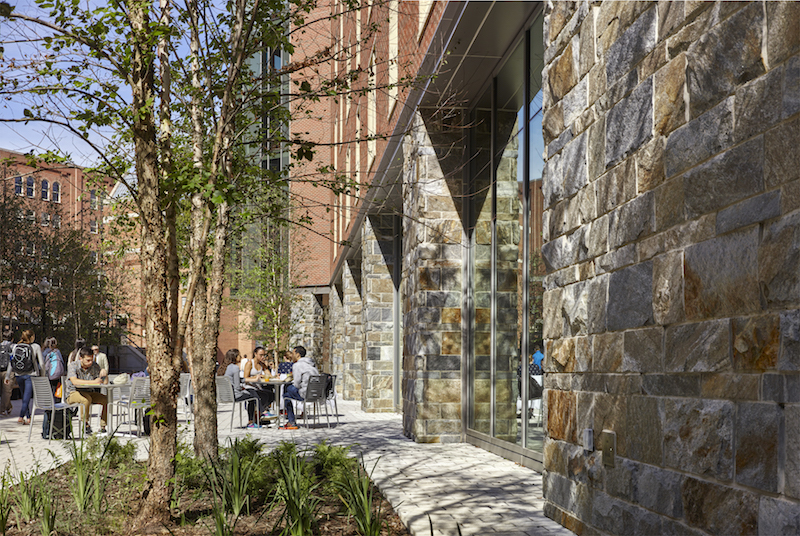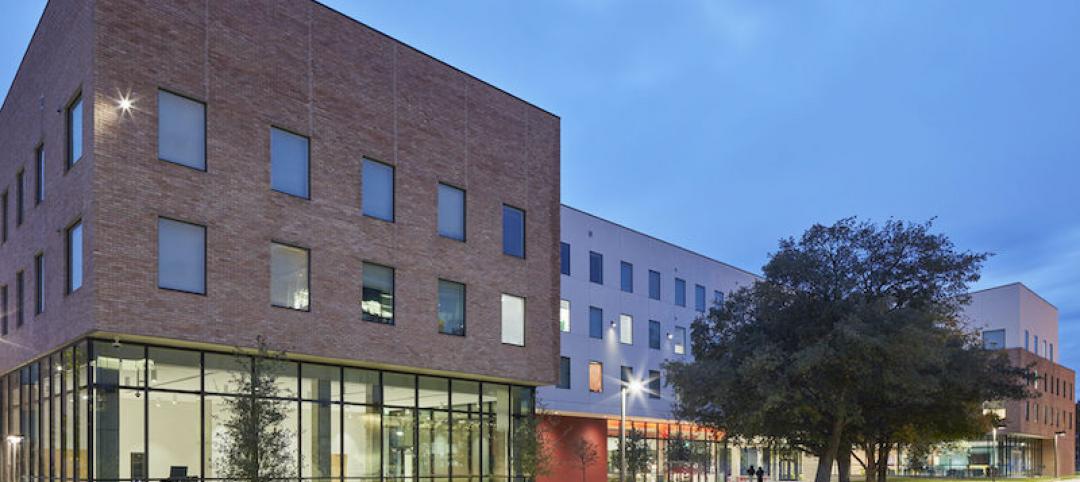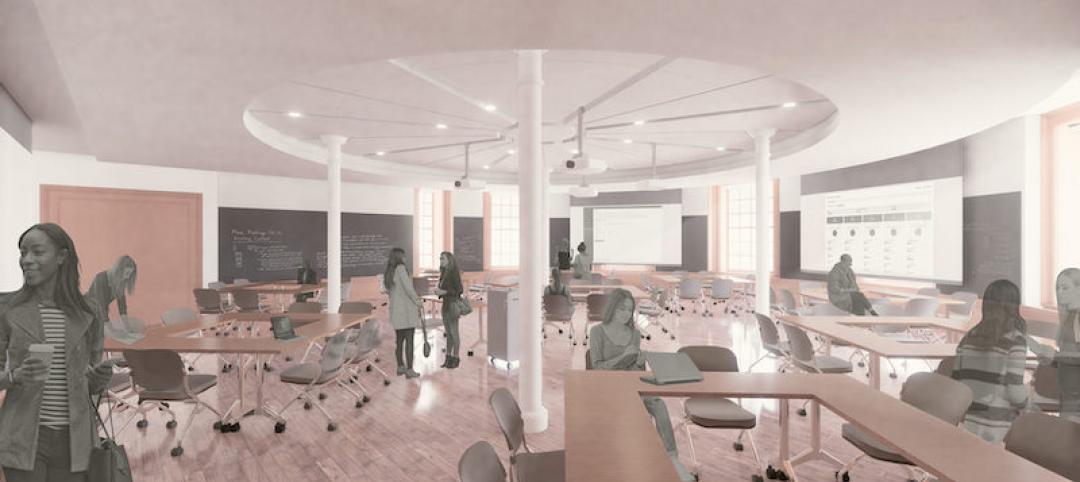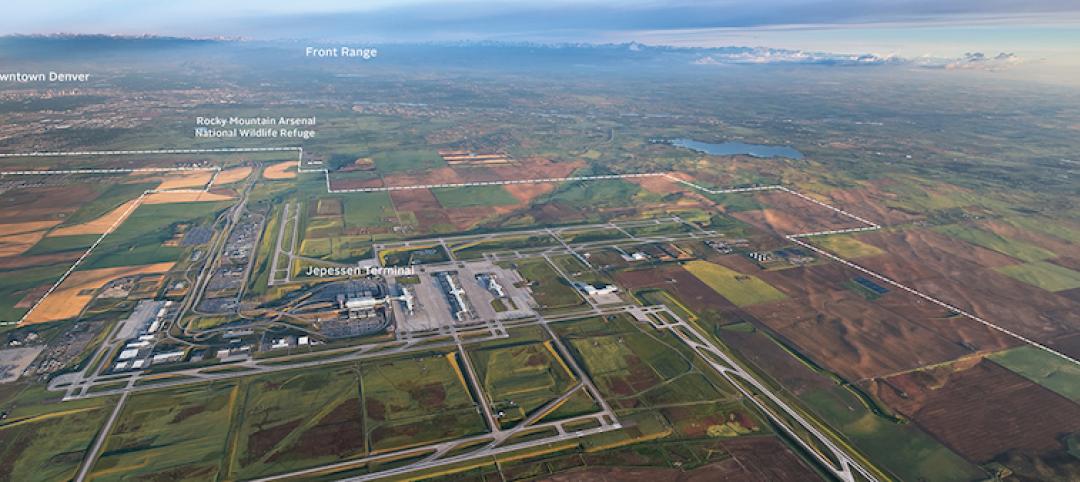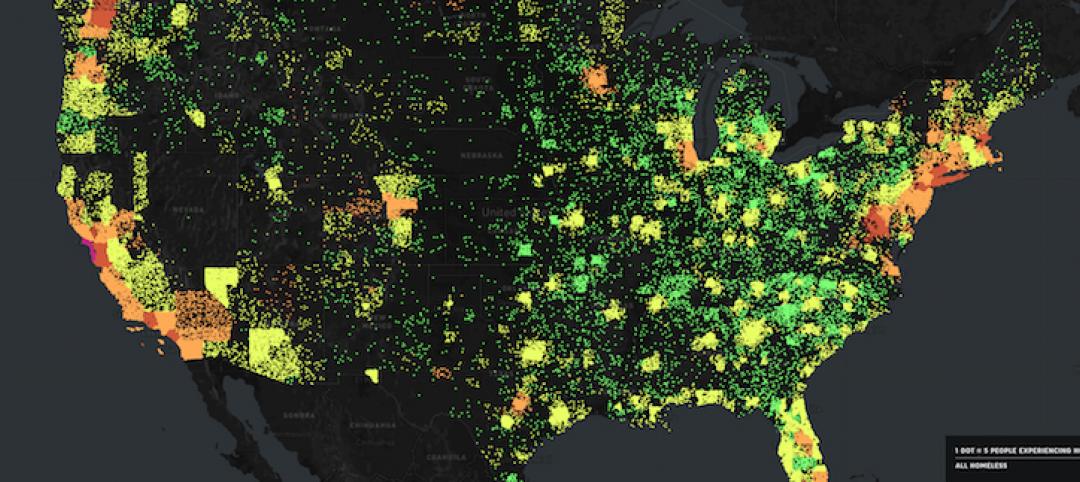As severe weather and more frequent natural disasters affect cities in the United States and around the globe, many of us are looking to invest in a more resilient future. Cities are often grappling with two-directional flooding challenges, as they face both gradual sea level rise or more frequent riverine flooding, as well as localized flash flooding due to rapid urbanization and more impervious environments. Just look at the challenges Houston faced earlier this year.
While there is no single silver bullet to reverse the effects of climate change, designers can help to plan ahead for handling more water in our cities by working with private and public land-holders who promote more sustainable design and development. Downtown colleges and universities, as large land-owners, are one such group uniquely positioned to lead the way in reducing their contribution to flash flood events by exploring creative ways of handling stormwater onsite.
The traditional civil engineering approach—which most cities and universities still employ—conveys stormwater from paved surfaces directly into storm drains, carrying it offsite as quickly as possible. This approach, while expedient, only exacerbates flash flooding downstream, affecting lower-lying (and often lower- income) neighbors and causing erosion and pollution of local waterways. We are working with a number of urban universities to generate innovative approaches to stormwater management on their campuses, helping to position them as stewards of their watersheds.
Our institutional clients are increasingly interested in managing stormwater through an integrated approach—minimizing the stress of water on our systems by incorporating elements like bioswales, porous pavements, green roofs, subsurface water storage, and floodplain greenways as a part of the signature spaces on their campuses. Some urban universities have also initiated creative ways to leverage their collected stormwater to offset potable water use for applications like irrigation or to circulate in cooling towers.
Integrating stormwater management techniques into planning and design efforts should be part of any large land-owner’s long-term resilience plan, but to move from high-level aspirations to tangible change requires implementation of impactful tactics that can convert stormwater from nuisance to asset. In our work with urban institutions, we have identified some common misconceptions about what it takes to approach stormwater holistically and examined some accessible ways to implement new approaches:
1. Building resilience to localized flooding requires systems-thinking.
The default approach of designing a campus landscape as a series of “donuts” around building projects misses the opportunity to think holistically about the urban systems at work on a campus. We work with universities to reposition the campus landscape as the identity-giving, social fabric of the place, which is also layered with environmental and resilience benefits. At Virginia Tech, we are working with our university partners to envision a green spine through campus, connecting the ceremonial heart of campus, called the Drillfield, to a restored ecological corridor. One piece of the design proposes daylighting a once-buried portion of the Stroubles Creek, and restoring the waterway to manage stormwater for the entire campus, improve water quality, and provide both habitat and recreational benefit. The investment in this green spine will allow the university to manage its stormwater holistically—instead of implementing a series of small one-off infiltration ponds—while also improving campus connectivity and experience.
2. Successful stormwater management requires new approaches to maintenance.
All stormwater best management practices (BMPs) require some level of ongoing maintenance to keep them functioning. Pervious pavers require vacuuming to keep them from clogging up (and consequentially becoming impervious) and maintaining rain gardens requires some specialized training of grounds staff in caring for a more diverse palette of native plants. However, institutions can typically expect lower frequency maintenance over the long-run with these new approaches. Mowing vast swaths of lawn or frequent maintenance of foundation plantings—typical to traditional landscapes—are labor-intensive upkeep for vegetation that does not contribute much to the ecological value of a site.
At the onset of a project, universities will need to allocate funds not only for the installation, but also for adaptation of existing maintenance plans to make sure BMPs operate efficiently and successfully over the long-term. Think of this as an investment: when these new maintenance requirements are weighed against the staff hours allocated to maintain traditional landscapes, overall investment across a full year typically remains comparable.
3. Stormwater landscapes don't have to look fuzzy and unkempt.
There are many stormwater BMPs that can be applied in urban conditions to both accommodate heavy pedestrian and vehicular use and slow and treat stormwater before it is released off-site. Although filtration through plant material or soil is often the most effective method to improve stormwater quality, storage in underground tanks or cisterns is another helpful approach in constrained urban contexts. They have little or no visual impact and still allow water to be reused for irrigation, or to be released slowly over time to reduce peak discharge rates. At Georgetown University’s Pedro Arrupe, S.J. Hall, opened in August of 2016, our design team found that employing underground storage tanks, which hold 10,000 gallons of water collected from the building’s green roof system, could offset much of the demand on the potable water system for irrigation without visually impacting the landscape.
4. Testing and employing stormwater BMPs is part of being a good neighbor.
Many urban universities are concerned not only about minimizing flooding on their own campuses but also about being good neighbors to surrounding communities by minimizing their impact on those downstream in the watershed. We saw this firsthand as we drew up our Master Plan for Tulane, which sits on high ground relative to surrounding, flood-prone neighborhoods. The Sasaki team worked with the University to incorporate stormwater storage and treatment concepts in future landscape projects. Other factors are also at play in New Orleans, where a new regulatory environment will soon give rise to a tax on all stormwater piped off-site. Given its land holdings and topographic situation, Tulane has the opportunity to introduce best practices in stormwater management that can have a real impact on reducing flooding in the city.
5. Simple, creative modifications to traditional infrastructure can provide big stormwater benefits.
Sometimes the simplest changes can be most effective when it comes to stormwater management. In our design for the Cedar Rapids Iowa Medical District Campus 10th Street streetscape, we proposed and implemented a simple modification to a standard city detail of a storm structure inlet. This design removed road pollution from the first flush of rainfall and redirected stormwater to irrigate the adjacent street trees, with only excess water flowing into the traditional storm drain system. This design reduced peak stormwater runoff, improved water quality, and reduced demand of potable water for irrigation of the streetscape. Because we worked with existing city standard detail rather than introducing a new, complicated or expensive alternate system, implementation was achievable. By infiltrating the water through the soil of native plantings that are tolerant to urban conditions, this system ultimately improved the city’s ecological health and is a great example of a creative and easy-to-implement solution.
As designers and planners we have an obligation to find ways—large and small—to help cities and institutions manage stormwater effectively for a more resilient future. By treating and leveraging runoff on-site, universities can demonstrate leadership in their communities and make a measurable positive impact on their urban environments.
More from Author
Sasaki | Feb 5, 2024
Lessons learned from 70 years of building cities
As Sasaki looks back on 70 years of practice, we’re also looking to the future of cities. While we can’t predict what will be, we do know the needs of cities are as diverse as their scale, climate, economy, governance, and culture.
Sasaki | Aug 6, 2021
Microclimates and community
Creating meaningful places that contribute to a network of campus open spaces is a primary objective when we design projects for higher education.
Sasaki | Apr 12, 2021
I’ll meet you right outside: Microclimates and community
These high quality exterior gathering places are increasingly important in supporting community.
Sasaki | Feb 16, 2021
A humanistic approach to data and design in the COVID era
As the COVID crisis continues to disrupt higher education, Sasaki is working with our campus clients on space planning initiatives that harness data to uncover solutions to complex challenges never before faced by college and university leaders.
Sasaki | Jul 28, 2020
Post-pandemic workplace design will not be the same for all
Regardless of whether it takes 3 or 18 months to fully return to work, it is clear the long march toward re-emergence from this global pandemic will likely be more of a gradual re-opening than a simultaneous return to life as we knew it.
Sasaki | May 31, 2018
Denver's airport city
Cultivation of airport cities is an emerging development strategy shaped by urban planners, civic leaders, airport executives, and academics.
Sasaki | May 26, 2017
Innovations in addressing homelessness
Parks departments and designers find new approaches to ameliorate homelessness.
Sasaki | Apr 3, 2017
Capturing the waterfront draw
People seem to experience a gravitation toward the water’s edge acutely and we traverse concrete and asphalt just to gaze out over an open expanse or to dip our toes in the blue stuff.
Sasaki | Dec 14, 2016
The future of libraries
The arrival of programs that support student and faculty success such as math emporiums, writing centers, academic enrichment programs, and excellence-in-teaching centers within the library, heralds the emergence of the third generation of academic library design.
Sasaki | Dec 9, 2016
Between floods: Resiliency and urban regeneration
It’s useful for planning for the “worst-case scenario”, but it is important to remember that major floods can happen at any time.

